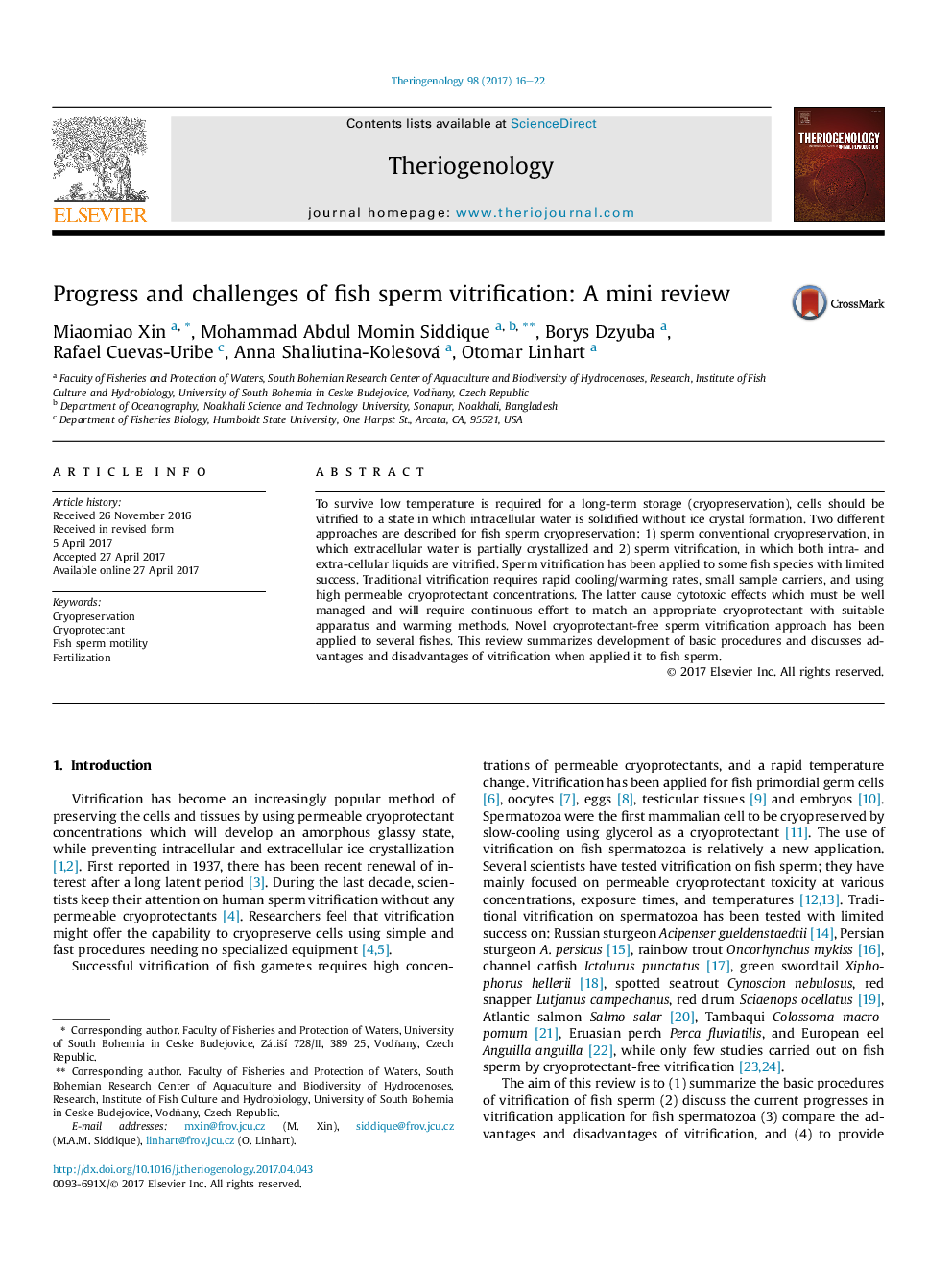| Article ID | Journal | Published Year | Pages | File Type |
|---|---|---|---|---|
| 5523064 | Theriogenology | 2017 | 7 Pages |
â¢This review summarizes the basic procedures and the progress of fish spermatozoa vitrification.â¢A brief discussion has been done on the advantages and disadvantages of vitrification.â¢This review would be useful for the future research on sperm cryobanking.
To survive low temperature is required for a long-term storage (cryopreservation), cells should be vitrified to a state in which intracellular water is solidified without ice crystal formation. Two different approaches are described for fish sperm cryopreservation: 1) sperm conventional cryopreservation, in which extracellular water is partially crystallized and 2) sperm vitrification, in which both intra- and extra-cellular liquids are vitrified. Sperm vitrification has been applied to some fish species with limited success. Traditional vitrification requires rapid cooling/warming rates, small sample carriers, and using high permeable cryoprotectant concentrations. The latter cause cytotoxic effects which must be well managed and will require continuous effort to match an appropriate cryoprotectant with suitable apparatus and warming methods. Novel cryoprotectant-free sperm vitrification approach has been applied to several fishes. This review summarizes development of basic procedures and discusses advantages and disadvantages of vitrification when applied it to fish sperm.
